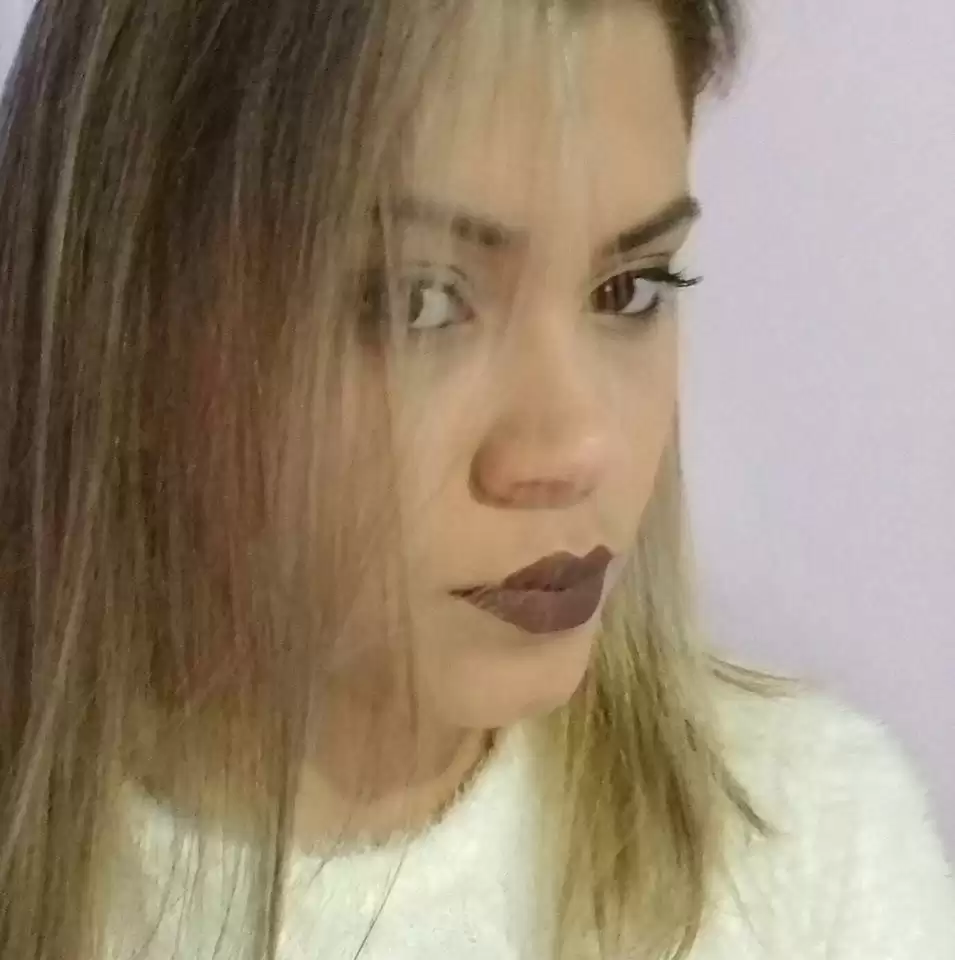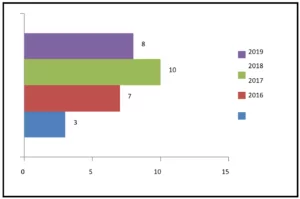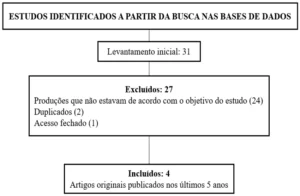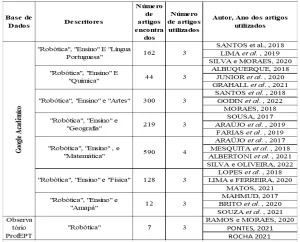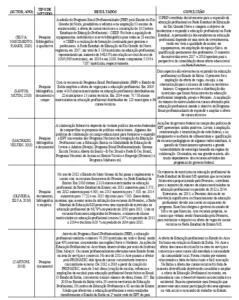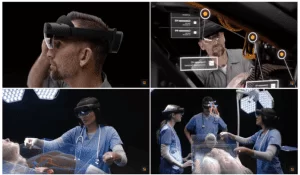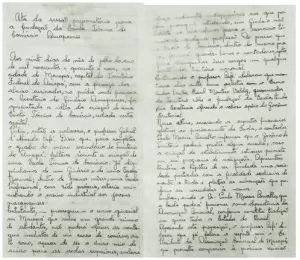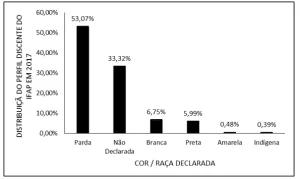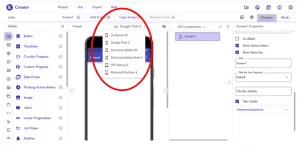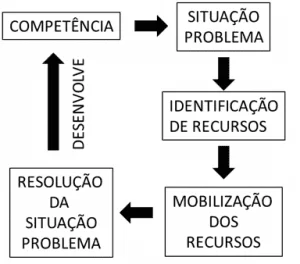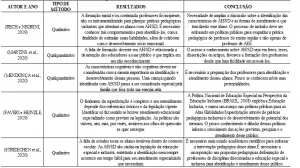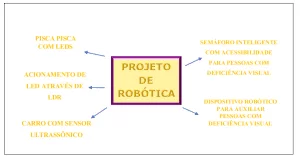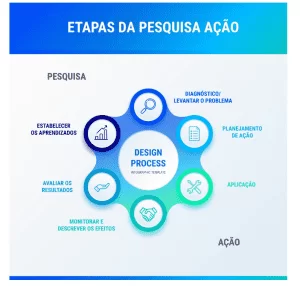SEIBT, Mayara Teixera da Silva [2]
SEIBT, Mayara Teixera da Silva. Special and inclusive education, a new school challenge: Microcephaly. Multidisciplinary Core scientific journal of knowledge. 9 Edition. 02 year, vol. 01. pp 130-147, December 2017. ISSN:2448-0959
SUMMARY
This article aims to raise awareness of the teacher to reflect on the importance of special education in children from an early age considering your periodization, respecting their intellectual, cognitive and social aspects. With the purpose of preparing the student for the society, involving so your family group, in a joint work with the school community. Developed in a critical look at the historical context of the student with microcephaly and your clinical specificity, due to your recovery and enhance the development of its full potential. We highlight the importance of qualitative training for teachers, to serve all areas of special education. To perform the analysis in field, note that currently in the classroom the teacher is actually working on the inclusion of children with disabilities. In this article the focus of the review is a student with microcephaly, which detected the student being the only case of Microcephaly caused by Zica Virus in the State of Paraná. This student this inserted in the Municipal Public Education Network of Rattlesnakes, whose theoretical contribution is based on the curriculum for Municipal Public Education Network of Cascavel – early childhood education, which directs the work of learning development person with a disability. This theme is of great relevance to the practice of the teacher, in view of the need for research and study on the case of children born with microcephaly. For being a new case and only to teachers seeking to stimulate the giving of different student referrals adapting them for the same. In this sense the methodological approach of the research is qualitative, because presents methods used by teachers during the teaching practice, and reality in the service of school students with microcephaly.
Keywords: Microcephaly, special education, Pedagogical action Challenge.
1. INTRODUCTION
The article in dispute have the prospect of a new look for the special and inclusive education, out later to teachers and students. Induces the company to reflect what the true meaning of teaching and work regarding the inclusion of children with microcephaly in regular education, taking into account its specificities. However there was a time when people with disabilities were assisted as: invalid, inefficient and chronic sick, soon realizes that this happens since the ancient times, yet we came across with the neglect of parents, community and authorities, even though social evolution is necessary to raise a new point of view in the face of human differences.
Thereby the process of inclusion of people with disabilities in school has assumed the recovery, on the assumption that the human being must be accepted in your plurality, focused not only on an equal and uniform education. Promptly the purpose of special education and inclusive is to ensure that all students with or without disabilities participate actively in all the activities at school and in the community.
In this optics the practice of inclusion of children with disabilities in school assumes that professor, family and the entire school community are United in one purpose, ensuring that all students participate in school activities of equal form, forming so critical citizens, soon every student is different in terms of style and pace of learning.
However the objective of the proposed work is to analyse the obstacles encountered in the process of school inclusion of children with microcephaly with justification, discuss about the prejudice towards the teaching of special education, by means of an approach history, in order to reflect and discuss the importance of intervention in educational activities, necessary to promote the development of psychological and cognitive functions of students which have microcephaly.
2. SPECIAL AND INCLUSIVE EDUCATION: BRIEFLY
Since the ' 80 Special and inclusive education, began to be seen with new eyes, with this surge, several documents guided and designed in inclusive perspective that changes with respect to universality of service, as we introduced the Ministry of education, with the Federal Constitution of 1988-special education and other initiatives that are in place for the education.
Law N° 9394/96-Law of Guidelines and Bases for national education-LDBN;
Law N° 9394/96-LDBN-special education;
Law N° 8069/90-child and Adolescent Statute-special education;
Law N° 94/10,098-accessibility;
Law N° 10,436/02-Pounds;
Law N° 89/7,853 – CORDE – support for people with disabilities;
Law 9424 of 24 December 1996-FUNDEF
Law N° 10,845, of 5 March 2004-to Complementation Program Specialist Educational to people with disabilities;
Law N° 10,216 of 4 June 2001-rights and protection of persons with mental disorders;
National education plan (2011-2020) – special education.
Law No. 13,301/2016 which guarantees to mothers of children affected by neurological sequelae resulting from diseases transmitted by Aedes Aegypti maternity leave of 180 days, which consists of aid in the amount of one minimum wage.
But for many centuries the society had the person with a disability, a be, outside the normal standards: threat and freak, spoken as abnormal and with mental delays sorted by patients, which should be excluded from social life. Soon the struggle for recovery and recognition of people with disabilities becomes arduous in every corner of the world, i.e. the inequality expanded, at the end of the American war of independence in 1783, Benjamin Rush, a respected doctor, was one of the first Americans to defend the concept of the education of persons with disabilities.
However Vygotsky (1997), "in the 1920, criticizes a new pedagogy dictates special, but it was archaic and falls, was weak and destined to the weak, thus advocates a new special school that should offer a strong helper for the school considered weak ". Thus with a Vigotskiana perspective, the teacher and the whole school institution must be attentive to the needs of the child encompassing the physical, emotional and social aspects.
It was created the first APAE (Association of parents and friends of mentally) in 1954 in Rio de Janeiro, having a group of parents and Rattlesnakes in the year of 1970, at the address: Rua Manaus, the institution proposed rehabilitation and adaptation of the child with the means with the commitment to work with the needs of the child.
In this way only in 1981 was enacted the concept (children with disabilities), and the term until then used was exceptional. In this sense second Mosquera.
From the early 80 arise, in our country, especially Rio Grande do Sul, the studies and applications of early stimulation in children from zero to three years old which have any change in your overall development, both in hospital and medical area , as in special schools and, later, in kindergartens and infant schools. From this new dynamic approach in treating babies with mental disabilities, began to intervene more precociously in the cognitive and affective disorders, neuromotoras of these subject, modifying the prognosis of learning the same developed . (MOSQUERA; STOBAUS, 2004, p. 19).
Soon Note-If a breakthrough with regard to the recognition and recovery of children with disabilities, we can highlight that for thinking on inclusive education implies in rethink and consider that the diversity and the knowledge must go together, in pursuit of appreciation of the characteristics of each student.
In the Declaration of Salamanca (BRAZIL, 1994), "proclaims that every child has characteristics, skills and unique learning needs, with the fundamental right to education and service programs take account of the vast, diversity of such nature and needs ".
In this optics the duty of all is respect for the individuality and diversity of the next passing him the importance of socializing and interacting with other social groups cultivating thinking and ideas for change. So Booth and Ainscow claim:
[…] inclusion is a set of endless processes. It involves specifying the direction of change. It is relevant to any school, no matter how inclusive or exclusive cultures, policies and practices are. It requires that schools engage in a critical examination of what can be done to increase participation and learning of students ' diversity within your location (BOOTH; AINSCOW, 2002, p. 7).
However the Inclusive practice assumes that professor, family and the entire school community are United in one purpose, ensuring that all students with or without disabilities, have access to learning.
2.1 Microcephaly: concept
The World Health Organization says that the "Microcephaly is a congenital malformation, in which the brain fails to develop properly. In this sense, babies are born with cephalic perimeter, smaller than normal, which is equal to or greater than 32 cm.
Being confirmed from any tests, can be diagnosed by a number of factors from different backgrounds, such as chemicals and biological agents (infectious), such as bacteria, Zica viruses and radiation. In pregnancies to microcephaly can be detected by ultrasound from the sixth to the seventh month-dates.
Second Cake; Cat:
"During pregnancy, the fetus is very vulnerable to phenylalanine and are in major risk of microcephaly. Bintra infections-such as toxoplasmosis, uterine infection Cytomegalovirus, rubella virus and human immunodeficiency, are also causes of embriofetopatia and microcephaly potential. " (CAKE; CARRILHO, 2003).
In this perspective, after birth, the newborn, must go through several physical routine, this period is one of the key moments to accomplish active search of possible congenital abnormalities, being confirmed, any anomaly must be notified cases of microcephaly in the registry of disease in live births information system.
Microcephaly is associated with mental retardation, added the locomotion problems, deafness and seizures, except in family origin, which may have normal cognitive development. Each event determines the type and the severity level, thus the treatments must be performed from the early years development and enhancing the quality of life.
The Ministry of health has confirmed the relationship between the zika virus and the outbreak of microcephaly, in November 2015,
However the competent organs feature support actions that can assist in the development of the child, as basic services, rehabilitation services, and hospital diagnostic examination, in addition to Orthotics and prosthetics to cases in which apply and this follow-up has protocol defined in the network Mother Paranaense.
2.1.1. The process and development of Special and inclusive Education for children with Microcephaly
For the MEC-Ministry of education (BRAZIL, 2000, law No. 10,098) "inclusive school is that linked to mobilization of the structure, the operation and the response of the education that all differences, individuals, including those associated with any disability" .
Resolution No. 3. Features: education systems must comply with the following guidelines:
I – full access and effective participation of students in regular education;
II – the offer of specialized educational assistance (ESA);
III-the training of teachers for the AEE and the development of inclusive educational practices;
IV-the participation of the school community;
V – the architectural accessibility, communication and information, in furniture and equipment and transport;
Vi – the articulation of public policy intersectaria.
However the procedure of construction and development of inclusive school demand of the competent authorities, a detailed analysis of the physical and temporal spaces, so that the teaching occurs so integrates geared training and professional performance Specialized.
Second Booth; Ainscow (2000), "the inclusion depends on three dimensions of relationships".
The size of the inclusive culture: which refers to the construction of an inclusive culture, a welcoming school community that if evolvam in appreciation and difference of each student.
The dimension of laws, Inclusive Policy: designed in the actions and policies that improve learning, policy practices and forms of support for the school institution, depending on the perspective of the development of each student.
The dimension of Inclusive Practices: the following dimension certifies that the classroom activities and require participation and completion extraescolares of all students, when considering that the teaching and support are part of the difficulties of participation of students in their teaching practices.
In this way, the school, must be prepared to receive and meet the needs of every child, however specifies we encounter the lack of knowledge and materials available to the institution, and community professionals in meeting students with disabilities, because the school routine involves a daily planning, which should be linked to the specificities of each student toward the formation of a collective, that is, it is necessary that all the professionals, with their different functions and assignments are prepared and tied to political and pedagogical work. Worrying about the formation of specialized teachers in the special education and especially pay attention to the space. As the CNB/CNE.
Art. 1. For the implementation of the Decree on the 6,571/2008, education systems must enroll students with disabilities, global development disorders and high skills/giftedness in common classes of general education and in the Educational Service Specialized (AEE), offered multifunction resource rooms or in Specialized Educational centres from public or Community institutions, faith-based or non-profit philanthropic; Art. 2. The ESA has as complement or supplement the student's training through the provision of services, accessibility features and strategies to eliminate barriers to full participation in society and your developing your learning; Sole Paragraph. For purposes of these guidelines, accessibility features in educating those who ensure conditions for access to the curriculum of the students with disabilities or reduced mobility, promoting the use of learning materials and teaching of spaces, furniture and equipment, communication and information systems, transport and other services. (CNB/CNE, 2009)
Insofar as the service expands the institutional reorganization precedes the fitness school inside, in this sense, the inclusion of special education, is not fully qualified, that is, the proposal does not guarantee the existence of a specific care for each child with a disability, as the demand of professionals in the area is low, overloading the Regent's professor. However the effort presented by teachers, demonstrates that the school inclusion of children with disabilities is possible, if designed and implemented, for the needs of each student.
Thus Freire in features in the design of Shõn and Nóvoa that:
The training of educators to attend specialized education and to support the regular school teacher can't distance himself from offering general education theorists of teachers. Emphasize training involving multiple knowledge-personal and professional training produced by humanities education; disciplinary knowledge-initial and continued in different areas of knowledge; curriculum knowledge related to teaching project-to the contents, methods, teaching techniques for the training of students; the proposal in the context of school-knowledge of experience, everyday practice from the culture (SHÕN; NÓVOA, 1995, p. 77-91. FREIRE, 1998)
On the examination of the proposal and the pedagogical action, confirmed a broad vision in relation to school, reality soon from a survey conducted with the teachers which assists a student with disabilities (microcephaly), note that for being a new case and only the teachers seek to stimulate the student enabling different methodological forwards adapted for the same.
The student E. R. S. P., enrolled in the Municipal Public Education Network of Cascavel, from the nursery, have microcephaly, was born with thirty weeks, was being accompanied by risk situation for four months, from the fifth month your board stabilized and was cleared to come to the medicinal uses: CMEI Gardenal, Baprofeno, to avoid continuous use and/or relieve seizures and spasms frames. His mother introduced him to your registration report CMEI in the Neuroclinica of doctor Rasaq, in which are included in the student is carrying microcephaly/lesions on CT with characteristic of Zica virus. Being the only case of Microcephaly caused by Zica Virus in the State of Paraná.
The student must follow up with a pediatrician, Pediatric neurologists and CEACRI with multidisciplinary team, Social worker, physiotherapy, psychologist, neonatologist, ophthalmologist, speech therapist, dietitian, dentist surgeon, pulmonologist Pediatric.
However his mother pleads with the Department of education a caregiver or teacher Pedagogical support, full time for the child, which, by the time you receive care from a computer technician, nursing student, only in the morning period.
However, in discussing the effort taken on the part of the professionals that meet the child, because the school assumes your role in overcoming the attendance, the teacher becomes the mainstay, which is facing a great challenge, if faced with the lack of texts for research based for such assistance, soon the teacher must be geared to meet the historical context and the child's family, as only having regard to the individual student's precepts, you can have the dimension of relevance identity of the same.
According To Garcia:
"Identity is the date of each with what is more significant of its values. (…) in each family there is an infinity of values transmitted from generation to generation and, throughout this last testimony and shared a involvement of affection and identity, survives and develops a sense of power and pride that reinforces the character and inspires behavior. " (GARCIA, 1995).
Soon, by stimulating the disabled student should consider the identity of children with disabilities, because it won't be if building, just within familiar, but in school Assembly, i.e. get understanding the role of human beings in society to be guided a reflection about the formation of the individual, aimed at humanizing, individuality and particularity of every person.
So the individual expresses your individuality and particularity of subject, first of all through training that enables your genotypic development in certain situations, just individuality results from other external factors formed by interaction with the environment, however it creates a hinged personality established through social relations.
Before the interviews it is clear that the term "special education", because of concerns with regards to demand, that is, the lack of knowledge and materials available. That the pros use of creativity, seeking research sources, ways to work, joining the pedagogical coordination and family, when communicating and sharing these studies and conducted with the purpose of stimuli to get the best location of his advances. The teachers seek to stimulate the student, then the proposal made by the curriculum for Municipal Public Education Network Rattlesnake-early childhood education, which directs the pedagogical work to be done for children with disabilities, articulating the activities that develop the contents: visual perception, tactile Perception, auditory Perception, perception, gustatory, olfactory Perception, motor coordination and the language.
So according to Professor, L.
"The professional to receive the disabled student, must seek knowledge about special education, get to know the specifics of the student by stimulating it, watching their progress and revise your methodology continually, in activities previously planned by the teacher, however the teacher has to seek information outside the school context and use creativity. " (Teacher: L, 2017).
So Special and inclusive education is a right guaranteed by law No. 9394/96 of Guidelines and Bases for national education (LDBEN), is guaranteed free of charge and the public authorities should encourage the access and permanence of children with special needs in regular school. Not being compulsory for the children's Education. As stated by Art. 58. "The term special education, for the purposes of this Act, the school education mode, preferably on regular network offered education for learners with special needs".
In this optics the educational institutions, teachers and the community should be prepared to ensure full access to special education, promoting the development and learning, with a joint assessment of educational actions.
According to the teachers surveyed.
"The main difficulties encountered in the classroom are: the lack of trained professionals specify for Special education, lack of teaching materials, accessibility and evaluation resources, however the teacher seeking information and ways to evaluate the individuality of student with disabilities ". (Teachers L, Q and T, 2017).
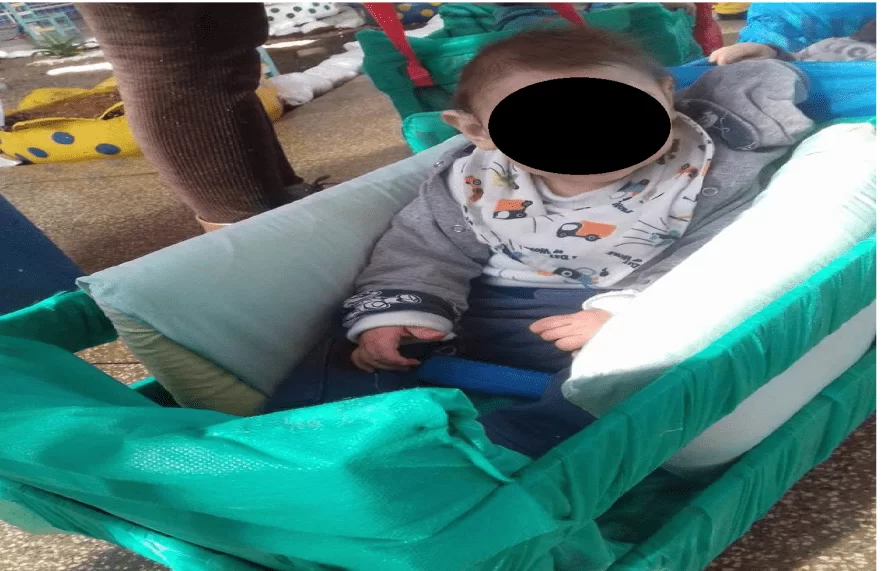
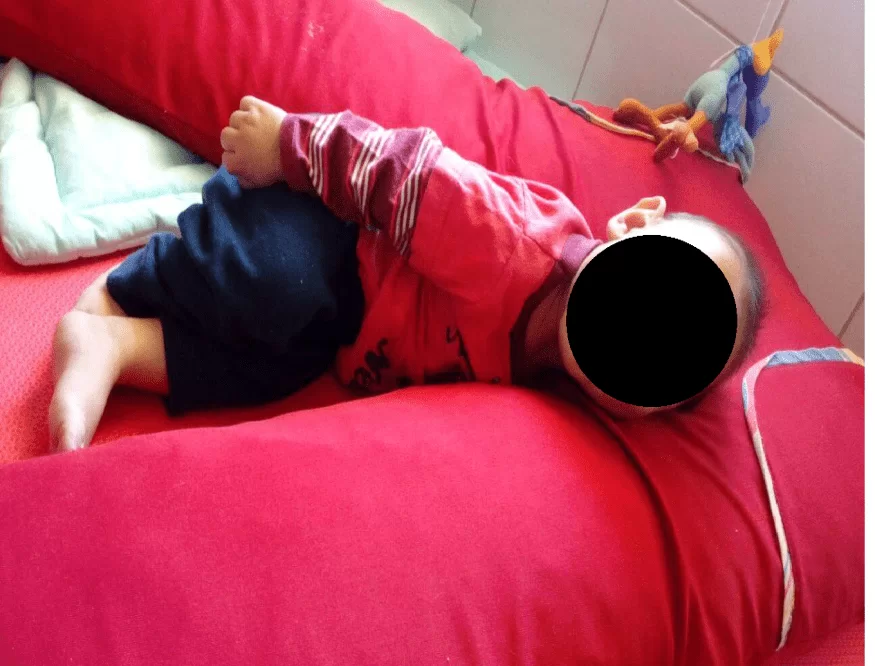
This second mode proposed in the curriculum for Municipal Public Education Network Rattlesnake-child education "the evaluation of disabled children or without disabilities does by monitoring and recording of your development without purpose of promotion", that is, understood by assessment tool the descriptive records and other feats that compose any child production, so the same pedagogical action guidelines. The evaluation of microcephaly should be procedure continues and diagnoses.
Note, that the teacher to evaluate individual student values and backed the development of its full potential and where necessary, revise your methodology and pedagogical action, soon the evaluation aims at overcoming the difficulties encountered both the teacher and the child.
As uttered Vygotsky:
If we ignore the needs of the children, what effectively encourage to act, we will never be able to understand their evolutionary advances to another because each advance is linked to a change of motives, inclinations and incentives. (VYGOTSKY, 1988).
In this perspective Sá (2013), presents a "contingency plan, would even take for children with microcephaly, tested in student G.". Displays methods used by teachers during the teaching practice, in meeting a student with microcephaly. Of those taken just ten models of interventions that assist the teacher.
First model of intervention: it is proposed the body tone exercises worked, with sitting posture, work postures to avoid spasms and contracture. Go to the student on the mattress, put the right side stimuli or help the child make the rotation to the right side and reinforce the stimuli. Propose the exercise of sensory stimulation in the wrist and forearm in order to progressively lose a primary reflection that still own, reflection of palmar prehension, observe if reacts to sound stimuli of the voice, which can be improved with the adjusting body posture and the touch.
Depending on the model of intervention: perform workouts sitting your child in an adult's lap, touching your back to the abdominal region of the adult, and put Visual stimuli in front of the child, or work in front of the mirror, an adult sitting on the floor with your legs open and the child sitting in the middle of your legs with different stimuli to your front, and talking, interacting with the child, with the aim of developing the upper limbs and balance at the global level.
Third model of intervention: exercise is to support your feet between my knees and go fletindo your legs to lift. Make sounds or blow on the neck noting if reacts smiling and keeping eye contact.
Intervention model room: the activity must be focused on meal time, work the chewing, introduction of solid foods, emphasizing the importance of keeping pauses due to child ingest a lot of air, and so give you space for release of the ingested air.
Fifth intervention model: it is proposed to visit the student to student rooms of greater age, because the room can have more Visual stimuli by the movement of the children themselves. Perform stimulation with colorful and soft palmtop.
Sixth model of intervention: perform stimulation of leaving the student sitting posture, with the help of the wedge and the roll. Do some exercises rotation engines, stimulation of the upper limbs. For stimulation of the upper limbs, flexion and extension of arms simultaneously.
Seventh model of intervention: Perform lower limb stimulation exercises, standing supported by trunk and with removal of the feet, the palmar stimulation with plasticine. Suggestion: make hot flour paste, rough and with aromas to work out.
Eighth model of intervention: Perform repetitions of the strategies adopted at the previous intervention, alternating with moments of sitting in the Chair.
Ninth intervention model: Join Puff gives sense of security and still works the balance, however care must be always attention to the placement of the feet. For visual stimulation: placing pictures of the parents, to call attention of the child. Seat the child since the child is more receptive to this posture prepare a Chair adapted, so that you can participate in activities with other children.
Tenth intervention model: sensory Stimulation the motor stimulation exercise, flexion of the arms, the stimulation of other senses always combined with motor stimulation.
Intervention models to top contrafazem records, where they tend to observe the reaction of the child with microcephaly on the various interventions, the interaction between the child adult and family, with the purpose of promoting an educational practice dynamically.
However the proposal hurt that it is necessary to think about a contingency plan and strategies to be drawn up for the student with microcephaly based on your historical context and familiar.
According to Professor, Q.
"The special and inclusive education is a fundamental proposal for the development of the student, but include the child does not require just put her in a classroom with the purpose that she has contact with other people. So implement inclusion depends on the combination of school, family, community and public authorities, so that the teacher can act by interacting with the environment, the child so putada. " (Professor Q, 2017).
Based on that purpose shall, taking into account all relevant aspects for a good development of Inclusive, requiring special education-if the use of equipment, specific resources and didactic-pedagogical materials to support the student and the work of professor.
However to achieve the enhancement of Special and inclusive Education must question and consider the obstacles encountered in the process of school inclusion of children with microcephaly, through a historical and clinical approach, starting from the proposals for assistance submitted by the subject in order to reflect and discuss the importance of the intervention of the educational activities, necessary to promote the development of psychological and cognitive functions of the students present microcephaly.
FINAL CONSIDERATIONS
On field research and the subject addressed, the importance of the enhancement of special education and inclusive, which presents the purpose of providing the child with a disability, a diverse class with times and conditions that encourage and oportunize the development of their full potential, however, the completion of the proposal for a Special Inclusive Education still qualitative institutional is a big challenge. So the institution proposes to work the individuality of the child with microcephaly, thinking and always seek the best care.
However with the inclusion of children with disabilities, lets remember that the advances expose the link of various educational achievements in the Valley that in appeal and accessibility of teaching materials, text and references to microcephaly still If makes scarce becoming a major difficulty in applying the necessary interventions and applying a class geared to the reality of the student clinic with microcephaly, however this does not mean the descaço by the coordination or direction, on the contrary the teachers are present and on the difficulties, soon conditioned by the lack of resources.
However the vast school expansion competes in extension and training of specialized professionals for such activeness in the classroom, i.e. the great demand of students with disabilities don't overcome the qualitative service execution, putting the Regent's Professor in an awkward position by such lack of information and bibliographic resources, because the service to children with disabilities should be focused on individuality, i.e. with the lack of professionals specialized in care of Special and inclusive education is necessary a measure to dribble and finish with the difficulties in attendance, from new educational proposals by the Government.
Thus even thinking about professional performance and teaching of a Regent's professor, is not guaranteed a specialized service aimed at full integration of the pupil, and specialized teacher training is of fundamental importance for the integral development of children with disabilities. Soon the school still faces with no obligation, namely, the early childhood education does not make the order mandatory, however the Special and inclusive education service is offered without demand of specialized professionals.
However, facing the theme addressed note that the teachers interviewed have the same front sight post Microcephaly, which refers to a congenital malformation and considered a disability, being a challenge to be reached, because this new disabilities cause worries and fears, since it's a new and unique. Soon the teachers meet student's disability in order to contribute your child development, so it is up to the teacher to search, search forms of different intervention, I call the attention of the student, allowing your development.
In this perceptive teacher should provide students with a supportive environment and pleasant microcephaly broadcasting trust, because with the interaction between teacher and student, allows and awakens curiosity and interest, whereas the learning is reduced to an elaborate planning and methods of work and Yes originally the dynamics and pedagogical action.
REFERENCES
Brazil. Ministry of education. Department of special education. Law No. 10,098, of 19 December 2000.
Brazil. Ministry of education, Department of special education. National guidelines for special education in basic education. 2. Ed. Brasilia: MEC; SEESP, May 2002.
Brazil. SALAMANCA DECLARATION and line of action on Special needs education. Brasilia: CORDE, 1994.
Booth, t. & Ainscow, m. (2002). Index for inclusion. Bristol: CSIE.
CROCHÍK, j. l. prejudice, individual and culture. São Paulo: Robe, 1995.
CASCAVEL (State of Paraná), the Municipal Department of education curriculum for municipal public education network of cascavel: vol. I – Early Childhood Education. Cascavel, PR, 2008.
FREIRE, p. pedagogy of autonomy. Rio de Janeiro: Paz e Terra, 1998.
GARCIA, Pedro, j. (1995). BABY, Child and Family at the turn of the century. CALOUSTE GULBENKIAN FOUNDATION: Lisbon.
Martins, l. a. Training teachers in an inclusive perspective: some observations.
Ministry of education. The access of disabled people to classes and common schools of regular network. Drawn up by Federal prosecutors, 2007.
MOSQUERA, José M. and STOBÃUS, Claus d. special education, towards inclusive education. Porto Alegre: P., 2004.
NEW SCHOOL. The mentor of education for awareness. Special Edition. São Paulo. p. 72, ed. April, 2008.
CAKE, j. m. and CARRILHO, m. (2003). Diagnostic orientation in Pediatrics – of the signs and symptoms to diagnosis differential. Publisher: Lidel. Volume 2.
PETERSON, p. inclusion in United States: implementation and training of teachers. Brazilian Journal of special education, Marília, v. 12, n. 1, 2006.
Resolution CNE/CEB No. 2. Art. 5, item III, MEC. 2001. National curriculum parameters: Curricular Adaptations/Fundamental education Secretariat. Department of special education. -Brasilia: MEC/SEF/SEESP, 1998.
Resolution CNE/CEB nº 04/2009 and Opinion CNE/CEB No. 13/2009
Resolution nº 4, 13 July 2010.
SAINTS. Monica Pereira dos. The role of higher education in an inclusive education. Journal of the Faculty of education of the UFF-n. 7. p. 78-91. May, 2003a.
SAMUEL, L. M. S. M. P. Early intervention and Effective Intervention strategies Microcephaly. School of education John of God. Masters of science in education in special education Specialty in Cognitive-Motor Domain, Lisbon, 2013.
SCHÖN, d. a. teachers as reflective practitioners. In: NÓVOA, a. (coord.) The teachers and your training. Lisbon: Dom Quixote, 1995, p. 77-91.
VYGOTSKY. Thought, language and art. São Paulo: Martins Fontes: 1991.
VYGOTSKI, l. s. Escogidas Works V-Fundamentals of defectología. Madrid: Visor .1997.
VYGOTSKY, l. S. thought and language. Rio de Janeiro: Martins Fontes, 1998.
APAE of Sapiranga-inclusion of person with disabilities. Available at: https://www.google.com.br/search?q=primeira+APAE+em+1954+no+brasil&espv=2&biw=1366&bih=667&source=lnms&tbm=isch&sa=X&ved=0ahUKEwi5ieTXhv_JAhXBjpAKHXDTAJQQ_AUICSgE&dpr=1#tbm=isch&q=primeira+APAE+&imgrc=M_yXDdm9uWLFLM%3A, accessed 15/January/2017.
APAE, Brazil, Nacioanal Federation of Apaes. Available at: http://www.cascavel.apaebrasil.org.br/, accessed on 21/January/2017.
Access and permanence with Success: assessing the student's School. Available at: http://br.monografias.com/trabalhos906/acesso-e-permanencia/acesso-e-permanencia.shtml, accessed 16/July/2017.
Ministry of health-Dengue, Chikungunya and Zika. Available at: http://portalsaude.saude.gov.br/, accessed 07/August/2017.
Preventing and combating: Dengue, Chikungunya and Zika. Available at: http://combateaedes.saude.gov.br/pt/, 17/Jul/2017.
Brazil portal, Study strengthens link between microcephaly and zika virus, 2016. Available at: http://www.brasil.gov.br/saude/2016/09/estudo-reforca-relacao-entre-microcefalia-e-zika-virus. Retrieved 04/August/2017.
SANTOS, Vanessa of Sardines. "Microcephaly"; Brazil School. Available at: http://brasilescola.uol.com.br/biologia/microcefalia.htm. 16/julho/2017 access.
ANNEX
Field research
Institution: CMEI: Maria Vaz Meister.
Type of institution: Municipal (public)
Educational levels: primary education
Alumni profile: 0 to 4 years
Community Profile: neighborhood on the South side
Faculty profile: Teachers with upper and middle level specialization.
Interview conducted with teachers that meet a disabled student. (microcephaly).
Teachers: Q, L, Intern (caretaker): T, and the Support Agent: e. Full CMEI: Maria Vaz in Meister.
- What do you understand how special education?;
- In your view, what are the necessary elements for quality care for students with disabilities in regular education fully?;
- In your opinion the teachers are ready to receive students with disabilities?;
- As the service to children with disabilities in a proposal that there should be the integral development of the same?;
- How students with disabilities are assessed?;
- As educational material necessary is available for work and mediate children with microcephaly?;
- What are the main difficulties encountered in the classroom in carrying out the activities addressed?.
[1] Work delivered to the Faculty of education are bronze, as a legal requirement for international validation of competences, for obtaining certificate of Specialization Courses, special education Inclusive course-with emphasis on intellectual disabilities, as Internal Regimental standard and Art. 47, Subsection 2, of the LDB 9394/96.
[2] Lato Sensu, Inclusive special education course-with emphasis on intellectual disabilities
